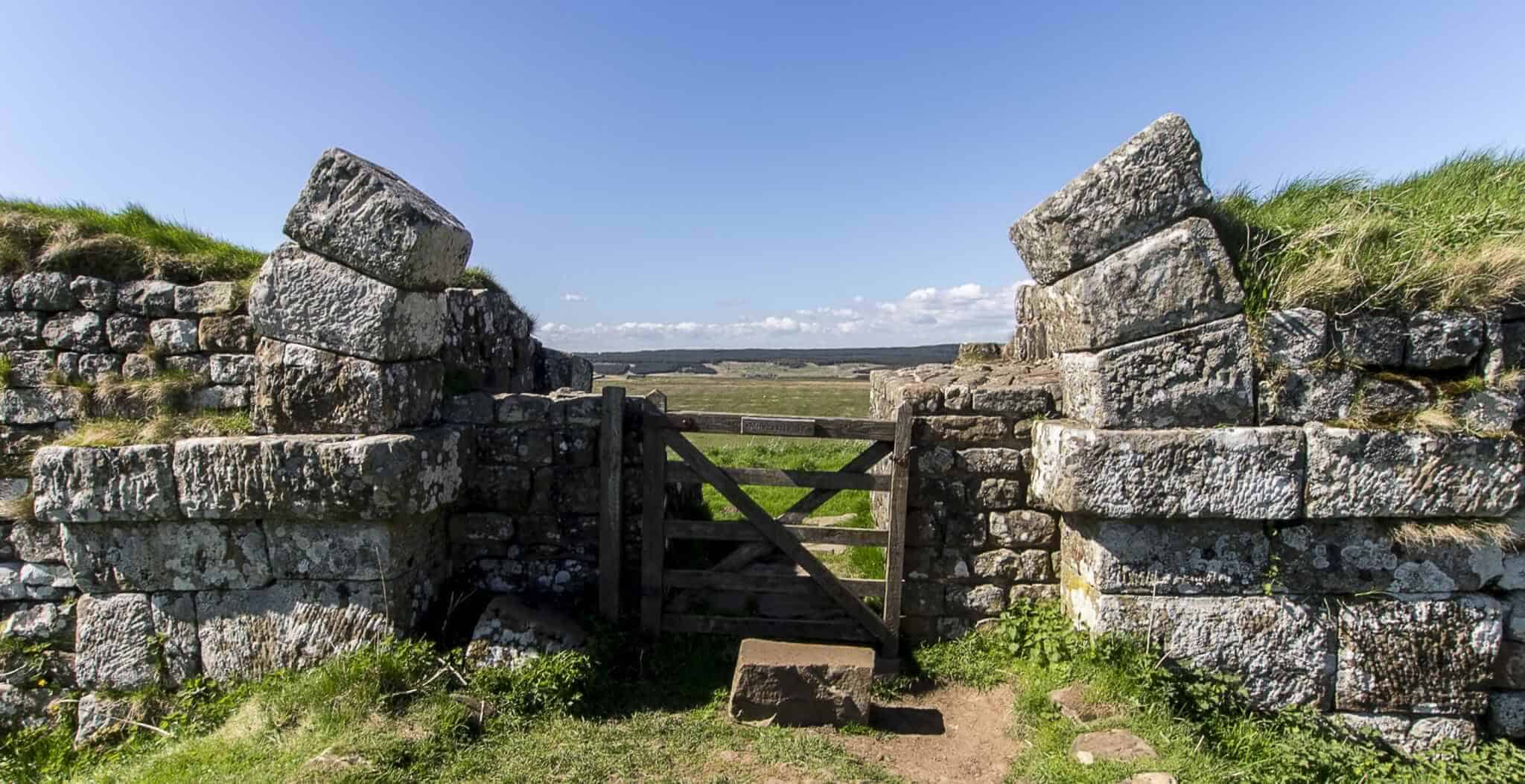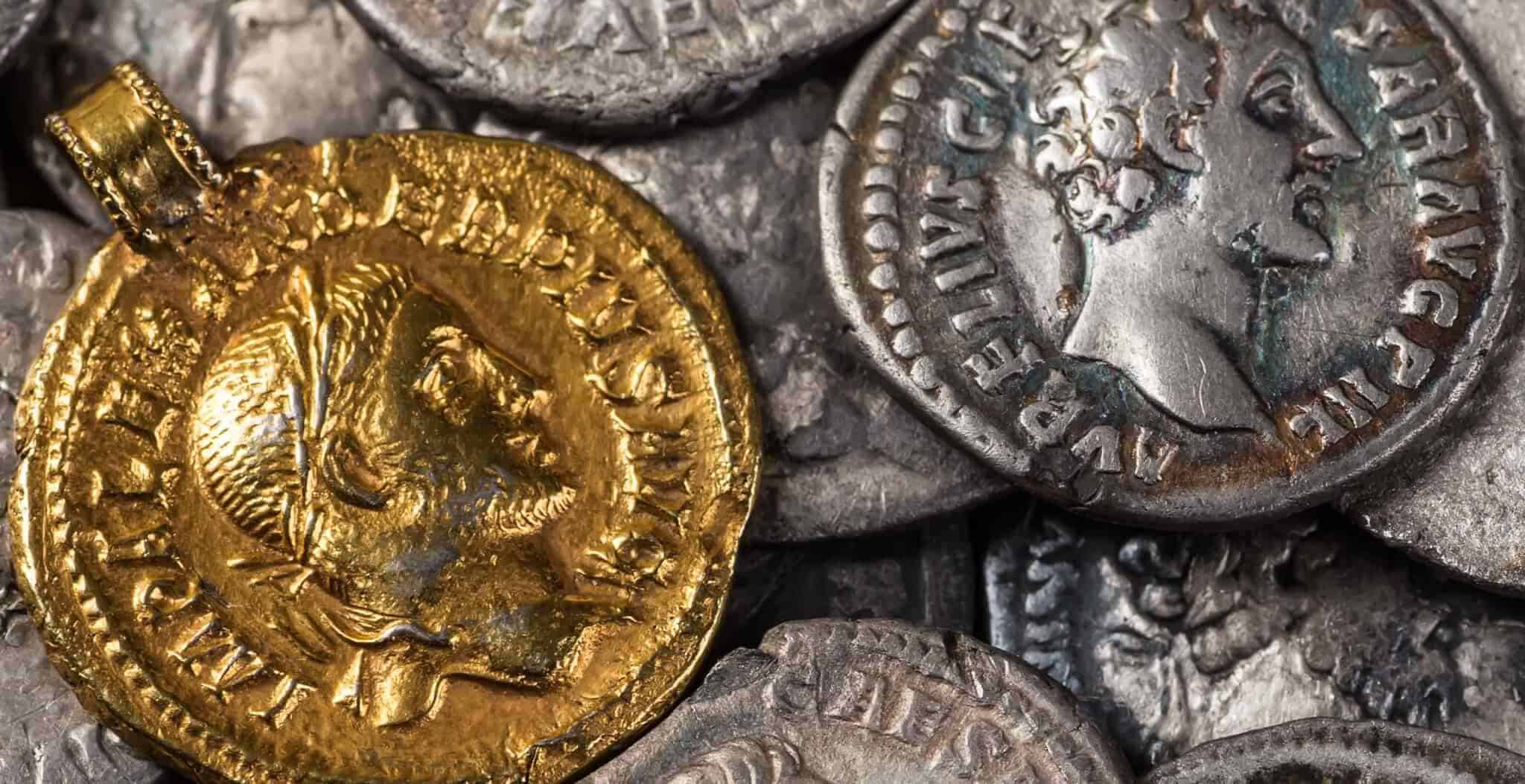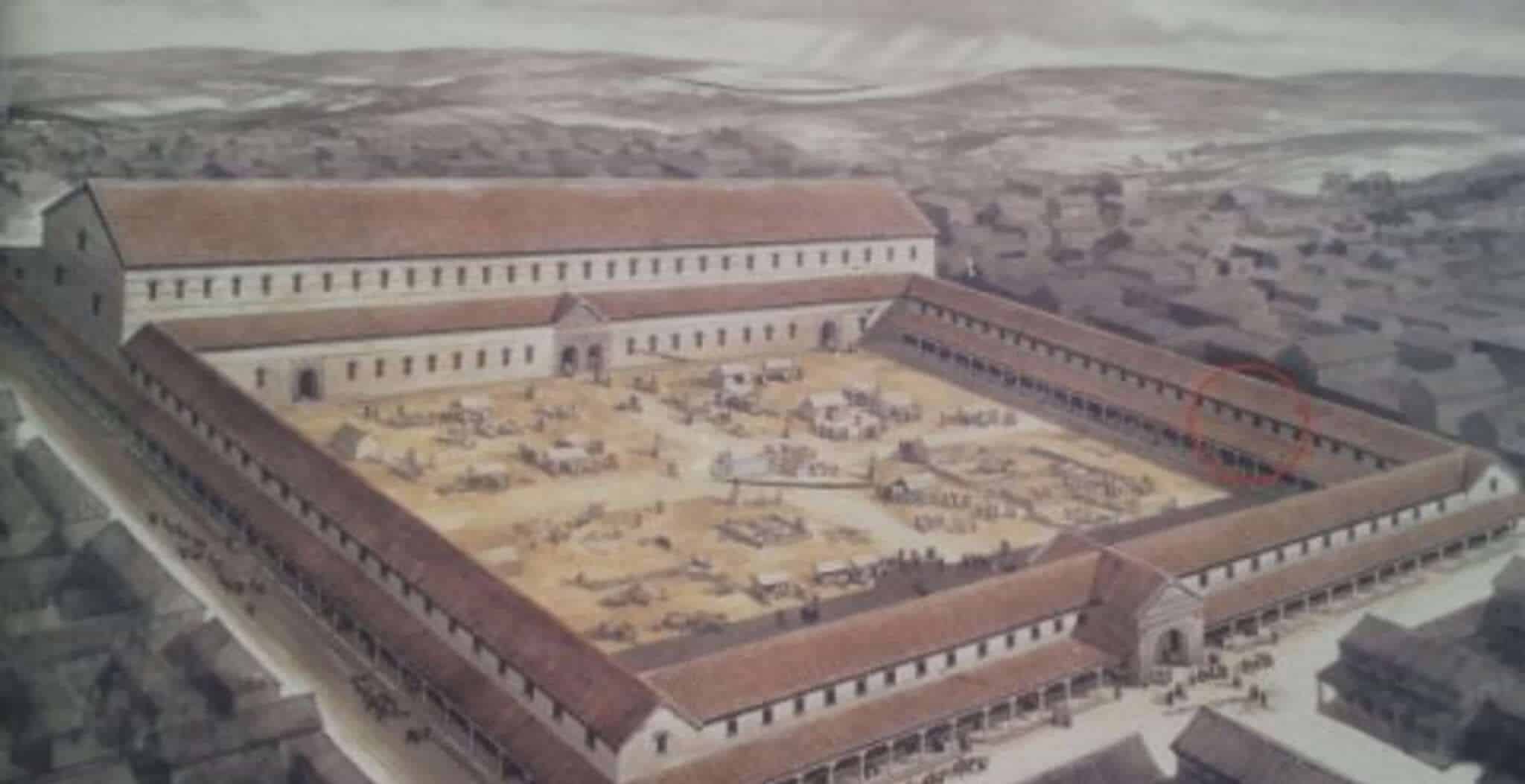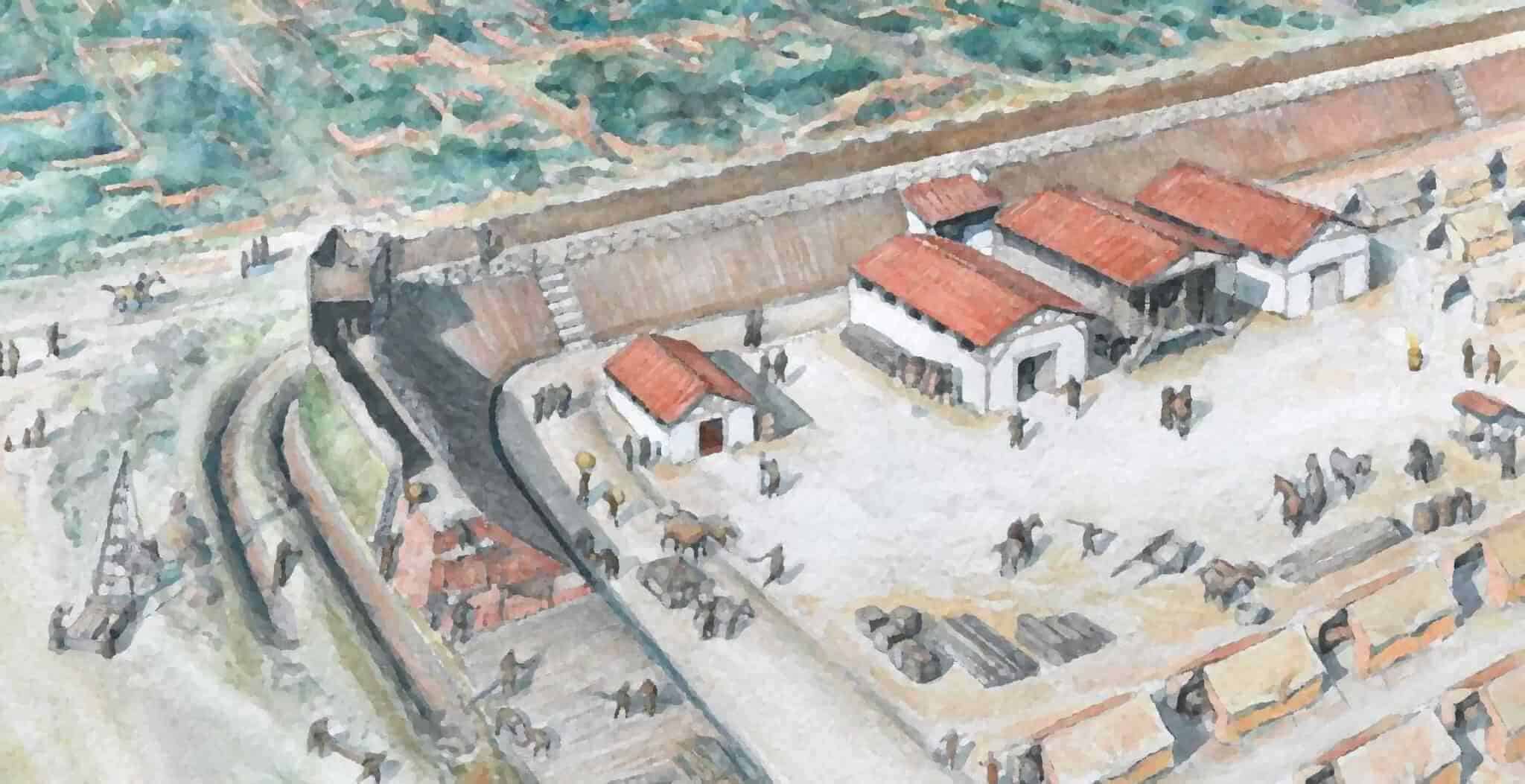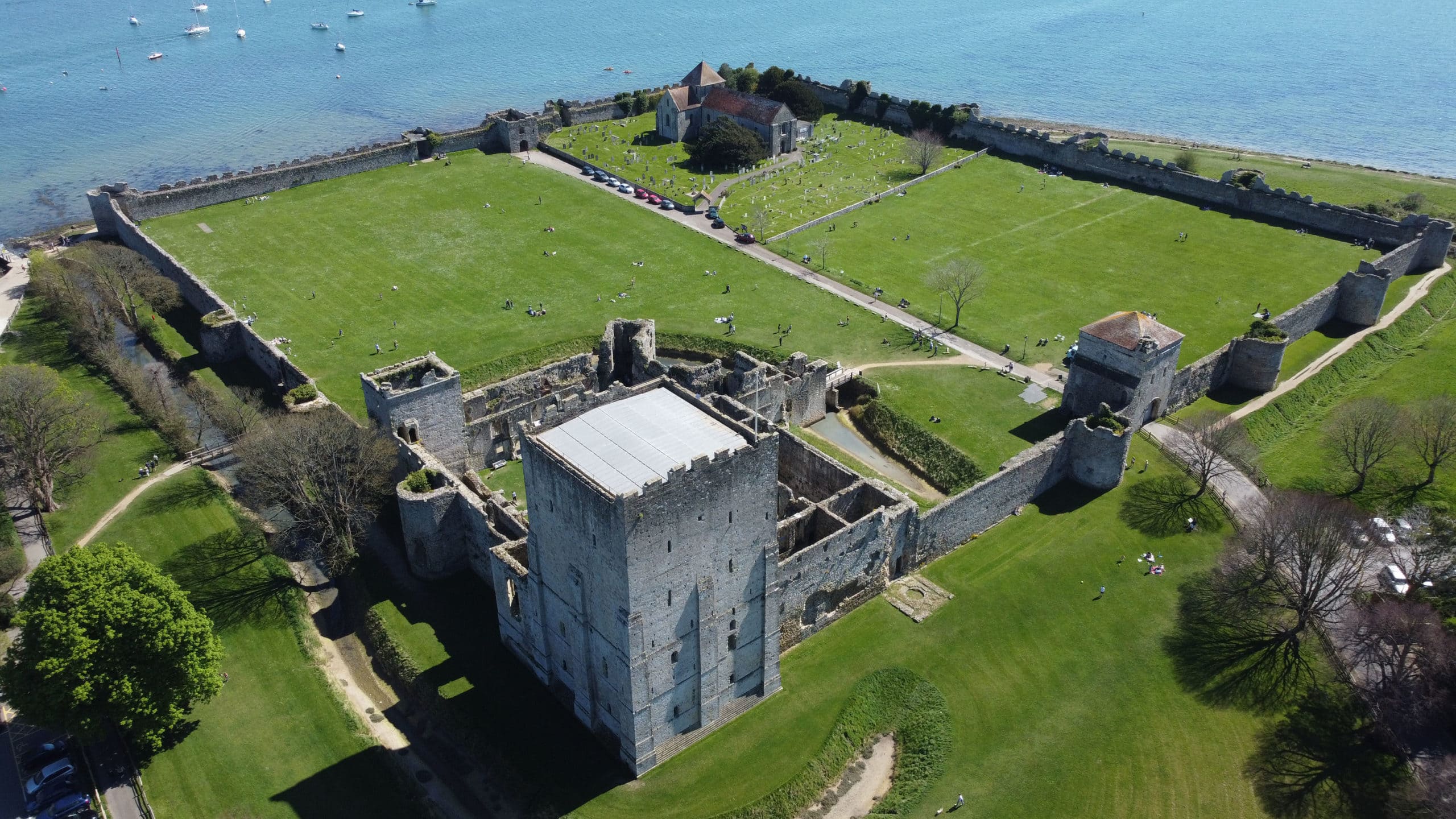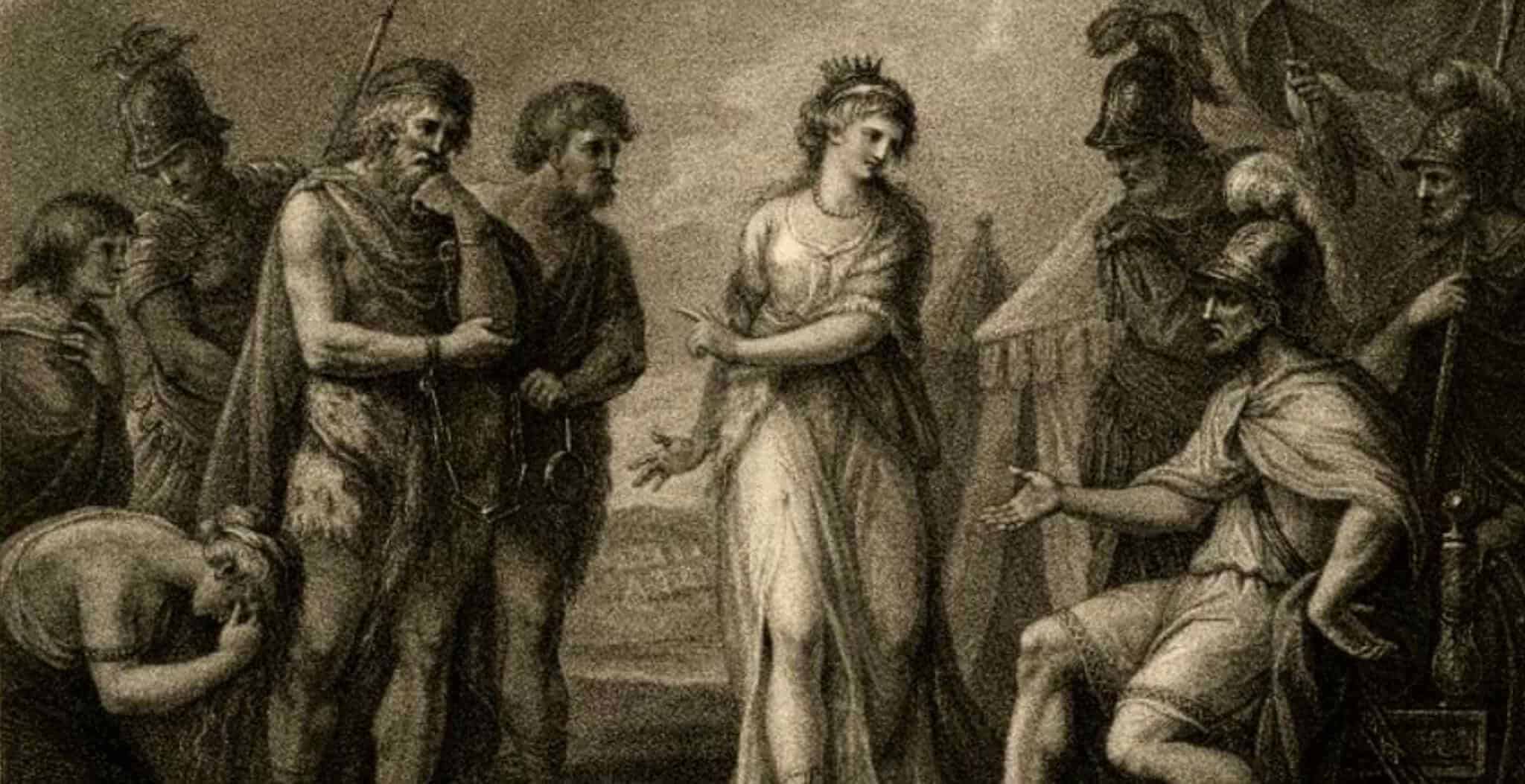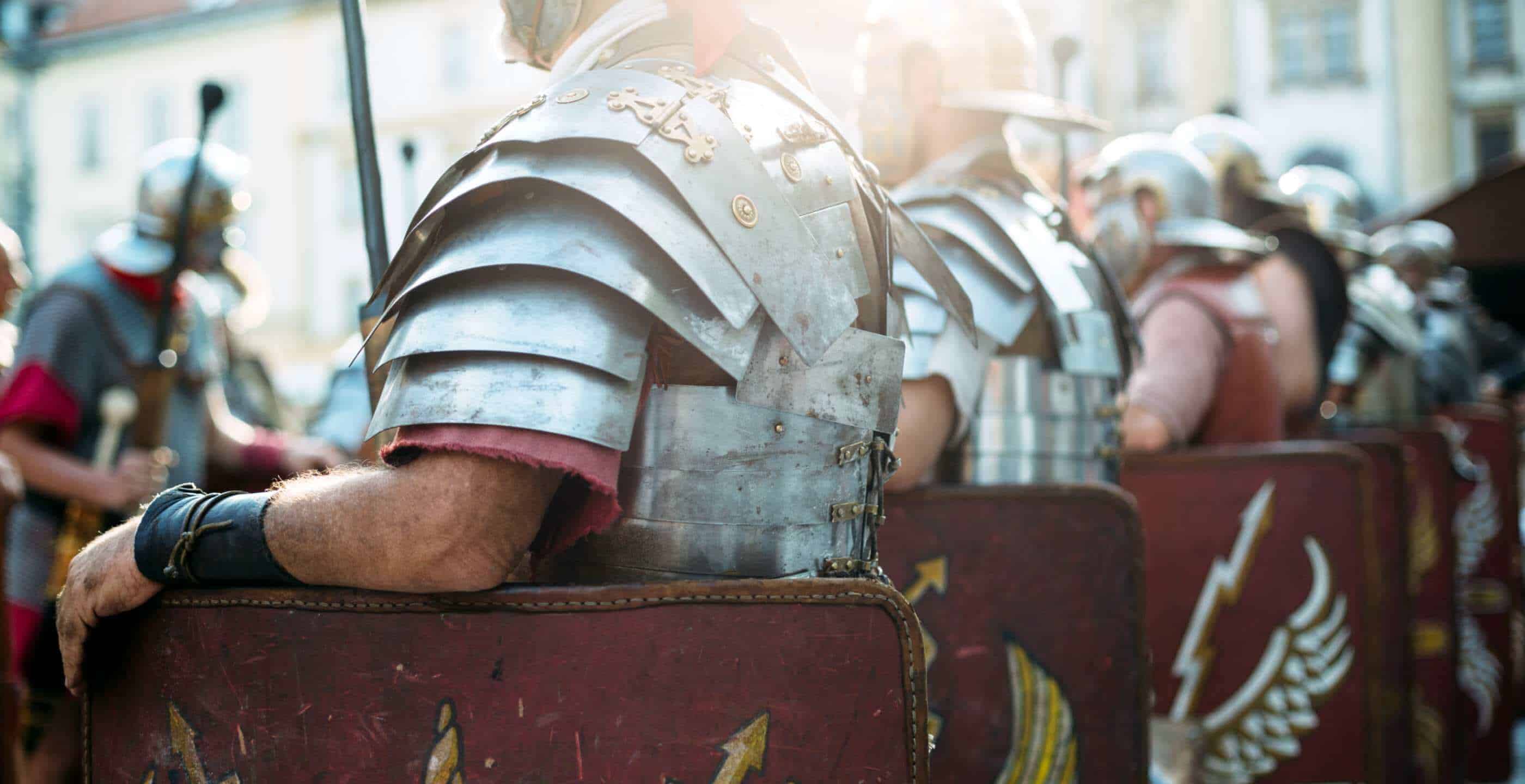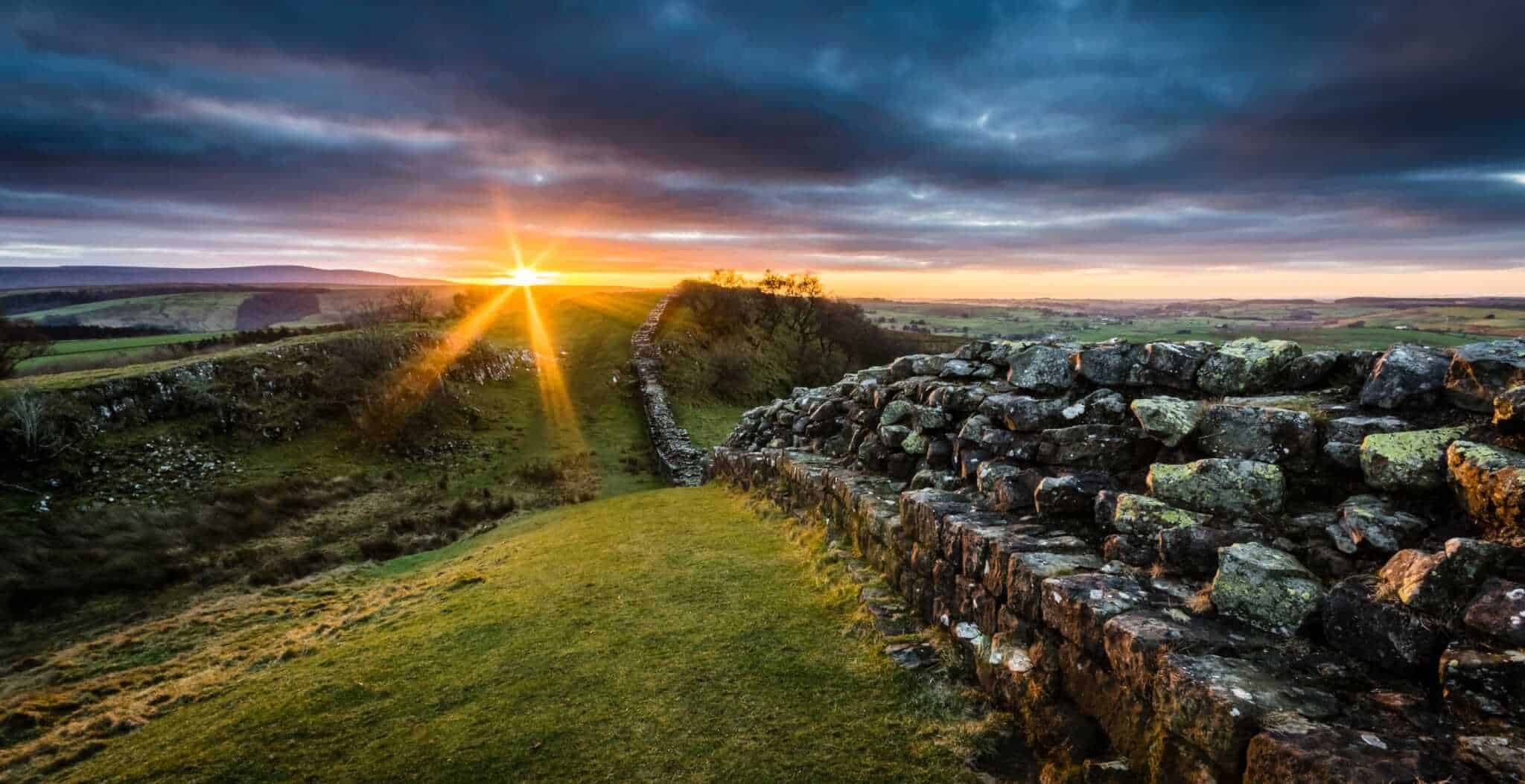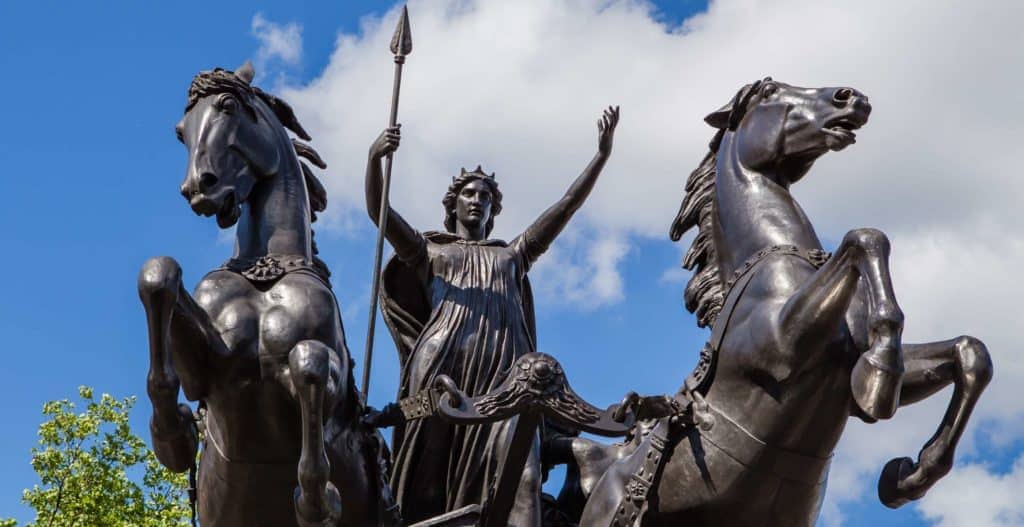From Julius Caesar’s first landing on the shoreline of England in 55 BC to the famous ‘Look to your own defences’ letter of AD 410, the Romans played an important part in British history for over 400 years. In this article, we take a look at the ups and downs of this often fraught relationship!
55 BC – Julius Caesar leads the first Roman military expedition to Britain, although his visit did not lead to conquest.
54 BC – Julius Caesar’s second expedition; again, the invasion did not lead to conquest.
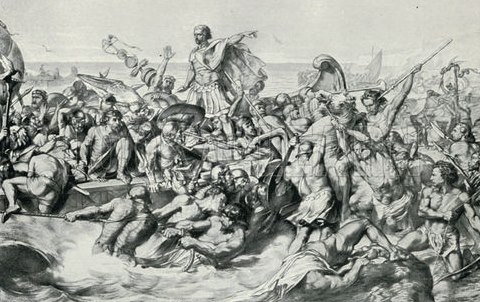
27 BC – Augustus becomes the first Roman emperor.
AD 43 – The Roman Emperor Claudius orders four legions to conquer Britain
AD 43 (August) – The Romans capture the capital of the Catuvellauni tribe, Colchester, Essex.
AD 44 (June) – The Romans capture the hills forts of Dorset, including Maiden Castle.
AD 48 – The Romans have now conquered all territory between the Humber Estuary and the Severn Estuary. Parts that remain under British control include Dumnonii (Cornwall and Devon), Wales and the North West of England.
AD 47 – The Romans force their allies, the Iceni tribe of East Anglia, to relinquish all of their weapons. The Iceni resist but their revolt is short lived.
AD 49 – The Romans found a colony (or colonia) at Colchester for retired soldiers. This was to be the first civilian centre of Roman Britain and – for a time – the capital of the territory.
AD 51 – The leader of the exiled Catuvellauni tribe, Caratacus, is captured. He had led a protracted guerrilla war against the occupying Roman forces for years, but was eventually brought to battle by the Roman governor Publius Ostorius. Caratacus spent the remainder of his days in retirement in Italy.
AD 60 – The Romans attack the Druid stronghold of Anglesey. The campaign to occupy Wales was however cut short by the Iceni revolt in south east England.
AD 61 – After attempting to fully annexe East Anglia, Boudica leads a rebellion of the Iceni against the Romans. After burning down Colchester, London and St Albans, Boudica was eventually defeated at the Battle of Watling Street.
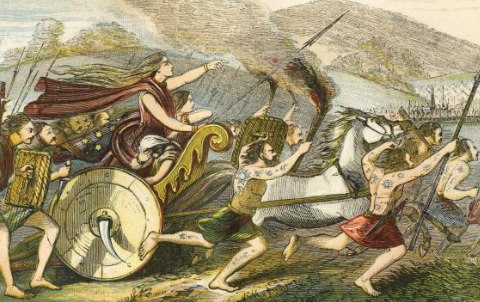
AD 75 – Building of the palace at Fishbourne commences.
AD 80 – London has grown to the point where it now houses a forum, basilica, governor’s palace and even an amphitheatre.
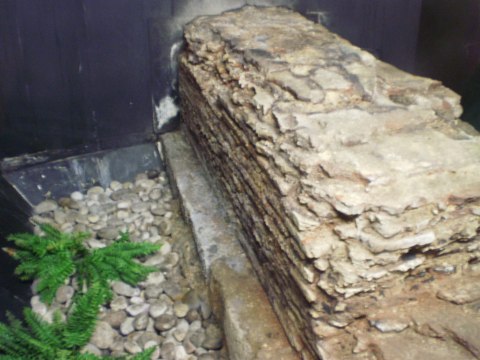
AD 84 – The Romans engage the Caledonians at Mons Graupius, Scotland. Although the location of this battle is uncertain, it is thought that it took place somewhere in modern day Aberdeenshire.
AD 100 – Most of the 8,000 miles of Roman roads in Britain are completed, allowing troops and goods to travel easily across the country.
The new Roman emperor, Trajan, also orders a complete withdrawal from Scotland and the construction of a new frontier between Newcastle-on-Tyne and Carlisle.
AD 122 – To strengthen the border between Roman-occupied Britain and Scotland, Emperor Hadrian orders the construction of a wall. Interestingly, many of the early forts along Hadrian’s Wall face south into Brigantian territory, showing the ongoing threat posed by recently subverted tribes of northern England.

Above: Hadrian’s Wall today. ©VisitBritain
AD 139 – 140 – The Antonine Wall in Scotland is built, dramatically shifting the northern border of Roman occupied Britain. This new wall is built of earth and timber, and is strengthened by a series of forts along its length.
AD 150 – Villas start appearing across the British countryside. Compared to their southern counterparts they are fairly modest however, with fewer than ten having mosaic floors.
AD 155 – St Albans in Hertfordshire, one of the largest towns in Roman Britain, is destroyed by fire.
AD 163 – The order is given to abandon the Antonine Wall and for Roman troops to withdraw back to Hadrian’s Wall. Although the reasons for this are unclear, it is thought that an uprising by the Brigantes had forced the retreat.
AD 182 – The Brigantes, along with other tribes of southern Scotland and northern England, start revolting against the Romans. Fighting continued for years along Hadrian’s Wall, with towns further south building preventative defences should the rioting spread.
AD 197 – After a period of in-fighting within Rome, a series of military commissioners arrive in Britain looking to purge any supporters of the recently ousted usurper, Decimus Clodius. They also look at rebuilding Hadrian’s Wall after over 15 years of clashes with the northern tribes.
AD 209 – After years of protracted conflict with the northern tribes, the Romans lead an army to Hadrian’s Wall border to engage the Caledonians. With the Romans aiming to meet the rebels in pitched battle, the Caledonians instead opt for guerrilla warfare. This forces peace treaties to be signed between the belligerents.
AD 211 – Britain is divided up into two separate provinces; the south was to be called “Britannia Superior” (superior being in reference to the fact that it was closer to Rome), with the north being named “Britannia Inferior”. London was the new capital of the south, with York the capital of the north.
AD 250 onwards – New threats to Roman Britannia emerge as the Picts from Scotland, as well as the Angles, Saxon and Jutes from Germany and Scandinavia, start threatening Roman lands. A series of Saxon Shore Forts are constructed along the eastern and southern coasts of England for protection.
AD 255 – With the increasing threat from seaborne Germanic tribes, London’s city wall is completed with the final stretch along the north bank of the Thames.
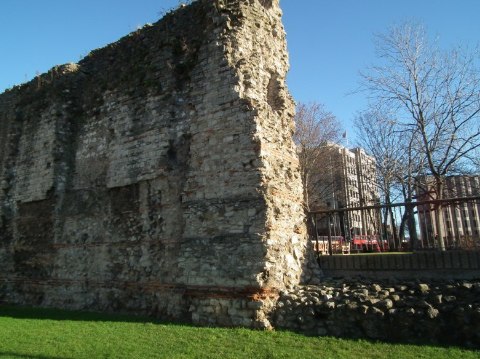
AD 259 – Britain, Gaul and Spain split away from the Roman Empire, creating the so-called ‘Gallic Empire’.
AD 274 – The Gallic Empire is re-absorbed into the main Roman Empire.
AD 287 – The admiral of the Roman Channel fleet, Carausius, declares himself Emperor of Britain and Northern Gaul and starts minting his own coins.
AD 293 – Carausius is assassinated by his treasurer, Allectus, who quickly starts work on his palace in London to solidify his claim to authority. He also starts building the famous ‘Saxon Shore Forts’ along the coasts of Britain, both to strengthen defenses against the Germanic tribes to the east but also to prevent Rome from sending a fleet to recover Britain for the empire.
AD 296 – The Roman Empire recaptures Britannia and Allectus is killed in battle near Silchester in Hampshire. Britain is then split up into four provinces; Maxima Caesariensis (northern England up to Hadrian’s Wall), Britannia Prima (the south of England), Flavia Caesariensis (the Midlands and East Anglia) and Britannia Secunda (Wales).
AD 314 – Christianity becomes legal in the Roman Empire.
AD 343 – Probably in response to a military emergency (although no-one is quite sure what this emergency was in relation to), Emperor Constans makes a visit to Britain.
AD 367 – Barbarians from Scotland, Ireland and Germany co-ordinate their attacks and launch raids on Roman Britain. Many towns are plundered throughout the province, and Britain falls into a state of anarchy.
AD 369 – A large force from Rome, led by military commander Theodosius, arrives in Britain and drives back the Barbarians.
AD 396 – Large scale Barbarian attacks on Britain start up again. Large naval engagements are ordered against the invaders, with reinforcements arriving from other areas of the empire.
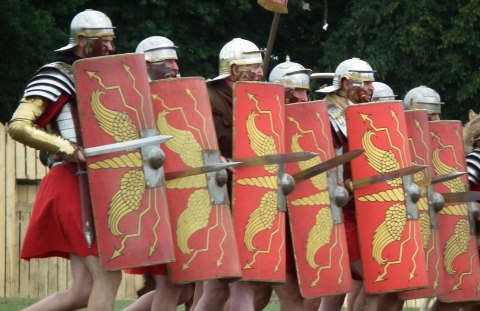
AD 399 – Peace is fully restored throughout Roman Britannia.
AD 401 – A large amount of troops are withdrawn from Britain to assist with the war again Alaric I, who is attempting to sack Rome.
AD 406 – For the past five years, Roman Britannia has suffered frequent breaches of its borders by Barbarian forces. With the Roman Empire focused on the more serious threats to Italy, reinforcements have stopped and Britain is left to its own devices.
AD 407 – The remaining Roman garrisons in Britain proclaim one of their generals, Constantine III, Emperor of the Western Roman Empire. Constantine quickly pulls together a force and crosses the English Channel to invade Gaul, leaving Britain with only a skeleton force to defend itself.
AD 409 – After throwing off their allegiance to Constantine III in 408, the local British populace expel the final remnants of Roman authority in 409.
AD 410 – With increased incursions from the Saxons, Scots, Picts and Angles, Britain turns to the Roman emperor Honorius for help. He writes back telling them to ‘look to their own defenses’ and refuses to send any help. This letter marked the end of Roman Britain.
Published: 22nd January 2015.
